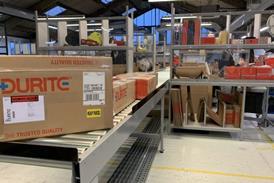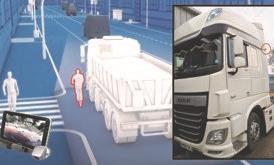
Stefan Buchner has been in charge of Mercedes-Benz Trucks since January 2013, taking over just 12 months before the introduction of Euro-6 - arguably the most significant change in emissions standards since the introduction of Euro-3 in 2006.
Buchner has been with Daimler for almost 30 years, the first 20 in cars the last 10 in trucks, but until recently always working in procurement or production.
"For the last 10 years, I have been in the truck business, which is completely different from passenger cars,” Buchner says. “The first years in the truck business I spent in procurement as well and my colleagues and I shaped our global procurement organisation. This is, from my point of view, essential for the success of the company. At the end of 2010, I got the opportunity to run the production of all the powertrain plants - manufacturing, engineering and procurement as well.”
While still very much a German company, Buchner is quick to point out that Daimler’s truck operation is already “a truly global business”.
“Six or seven countries out of the top 10 for Mercedes-Benz are outside of Europe,” he says. “In terms of sales, Brazil is top, then it's Germany and then it's Turkey.
“I think we still have some opportunities in some markets to be more successful in terms of volume than we are today. One example is China. The Chinese market for medium- and heavy-duty trucks is approximately 600,000 to 700,000 trucks. Today, only 20,000 of those are European-branded trucks. We made a market study of China and we came to the conclusion that by around 2020 there might 100,000 to 120,000 European-branded trucks sold there. So this would be the biggest market for Mercedes and we would like to be more successful in terms of volume in the market.”
That is not to say Mercedes-Benz is not already doing well in China. “We are the leading European brand in China, and I really see a great opportunity because we have the products which really fit this market,” Buchner says. “China will be a Euro-6 market in the upcoming years. So China is one market where we see opportunity to grow, as well as in Brazil where we have improved our products to appeal more to customers. We would like to be the market leader in Brazil as we were in the past.”
Part of Mercedes-Benz’s strategy for Brazil is to increase the locally made components of its Actros to over 60%. “We have a good product portfolio from the light-duty to the heavy-duty truck, so we're prepared in Brazil and Latin America as well,” Buchner says.
The Daimler group is also looking at sourcing components in China, possibly through its joint venture with Chinese truck maker Foton.
“I think we should use the Chinese supplier market in order to buy components because they are very competitive, but also we would like to use the Indian supplier market, which is also very competitive,” says Buchner.
But he is more sceptical about Asian trucks ever making a serious impact on the European market, despite the first appearance of Chinese OEM Dongfeng – which has a joint venture with Volvo – at Hannover.
“The European branded manufacturers, especially Mercedes, have a technology for Euro-6,” says Buchner. “It's the latest technology, which is definitely needed for the European market. And it's not only the technology; it's also the sales and the service network, which is very important, especially in the truck business. So we take it seriously, we watch very carefully, but we are strongly convinced, with our products and our service capability, that we are the number one in the market.”
Euro-6 strategy
When it came to launching Euro-6, Mercedes-Benz was an early mover, introducing its new Actros in both Euro-5 and Euro-6 guises in 2011.
“We had a clear strategy in mind,” says Buchner. “We wanted to offer our customers Euro-6 as soon as possible, because there were a lot of concerns, especially about fuel consumption. So our strategy was to convince the customer that we could offer good technology, which from a total cost of ownership – not just fuel consumption - point of view is the right solution.
“Our customers had the opportunity to test this Euro-6 technology and the feedback was very, very positive. So the customers were confident to our technology, and therefore, it was the right thing.”
As a result of its early launch Mercedes-Benz is clear market at Euro-6, with over 40,000 trucks now on the road around Europe. They have proven in service to be better on fuel efficiency than Euro-5, something which has surprised many operators.
“The idea was to develop an engine for the future,” says Buchner. “So it started with the block, the head, injection system etc. But it is a combination of the engine, the transmission, the axles and the electronics. That is our strength - we have the technology inhouse to achieve the ideal integration of engine and powertrain.”
Demand spike
The UK still saw a huge spike in demand for Euro-5 late last year as operators voted with their wallets to stick with tried and tested technology.
“In the UK, last year there was, at least in December, a huge demand for the Euro-5. I think it was the biggest sales ever, so there was a pull-forward effect in December, especially in the UK,” says Buchner. “At the beginning of 2014, the European market was very strong, so when we compare 2014 with 2013, it was at least until July on the same level. What we do see is that the European market might be at least 5% down in 2014 in comparison to last year, when the market was 290,000 trucks.
“It's not a big surprise because we always have up and downs in our truck business. We have to manage that successfully and we have to do it professionally. But there is a need to change the old trucks to new ones in the upcoming year.”
It is still not clear if current low truck sales volumes are just part of the normal pattern linked to Europe’s economic cycle or a structural shift as operators found in the recession they can run trucks longer and harder without affecting reliability.
“In the last few years, we are far below the average volumes 10 years ago when the European market was 330,000 to 370,000 trucks a year,” says Buchner. “I don't know if we will regain the volume which we had 10 years ago. The transportation industry is getting more and more professional year by year. So there could be a lower volume maybe in the future.”
Higher cost
Another real concern about Euro-6 was that the high cost of developing the new technology and the extra exhaust treatment equipment required would see the price of trucks rise by up to €10,000 on Euro-5. But it has become clear that some manufacturers are now prepared to take a pragmatic view on Euro-6 pricing to persuade operators to start buying the new models.
“The technology for Euro-6 is more expensive and everybody had the need to transfer that to the customers,” insists Buchner. “We did it in a proper manner and we get the price from the market, because it's not only the purchase price of the truck. Our clear position is it's all about the total cost of ownership. The price of a truck is approximately 10% of the overall TCO, so there are much more important items like diesel and the driver.”
The added complexity of Euro-6 also means OEMs are keen to have as many vehicles as possible on dealer repair and maintenance contracts rather than letting the operator maintain the vehicle inhouse.
“Our preference is for service contracts, because we think this is the best thing for our customers,” says Buchner. “We have three kinds of service contracts and the take up rate in different countries is very satisfying. In some countries we have 70%, of our customers on service contracts and that speaks for itself.”
Carbon emissions
The next Euro standard will focus on CO2 rather than NOx and particulate emissions and will challenge truck makers to extract maximum efficiency from the whole vehicle not just the diesel engine. Mercedes-Benz showed its highly aerodynamic Future Truck at Hannover, which features a super slippery cab and tiny rear view cameras instead of mirrors.
“We always try to improve our fuel efficiency, not only related to the power train but also to air resistance,” says Buchner. “You see some ideas when you look to the future truck - the outside mirror, for example, which makes a big step forward.
“CO2 is a big challenge for all of us, but it's not only the truck industry who can bring the solutions to the table. It is a combination of legislation, truck OEMs and the trailer industry. If we really work together, then we can make it.”
The Future Truck also features a demonstration of autonomous driving – a truck that can drive itself on highways at least.
“We do see autonomous driving by 2025,” says Buchner. “But autonomous driving does not mean that we do not need a driver any longer. It means we have autonomous driving like in an airplane or a train. So, we would like to change the daily work of the driver.”

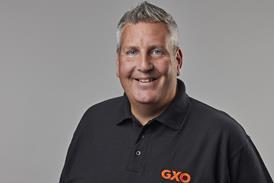
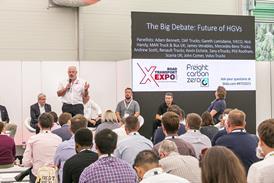
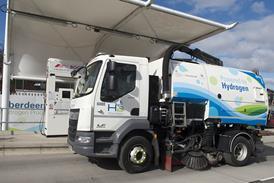


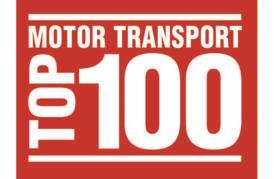
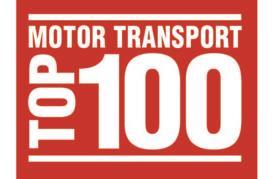
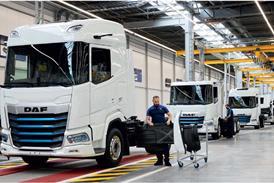
![Mercedes-Benz_eActros_600_(1)[1]](jpg/17820_mercedesbenz_eactros_600_11_978080.jpg)

